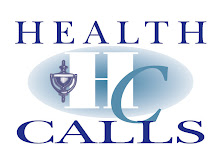May is National Stroke Awareness Month. The National Stroke Organizations has published the following guidelines.
Medical stroke risk factors include:
Previous stroke, previous episode of TIA or mini stroke, high cholesterol, high blood pressure, heart disease, atrial fibrillation and carotid artery disease. These medical risk factors can be controlled and managed even if you have already had issues with any of them in the past. Talk with your doctor about what will work best for you.
Lifestyle stroke risk factors include:
Smoking, being overweight and drinking too much alcohol. You can control these lifestyle risk factors by quitting smoking, exercising regularly, watching what and how much you eat and limiting alcohol consumption.
Public Stroke Prevention Guidelines
1. Know your blood pressure. If it is elevated, work with your doctor to keep it under control. High blood pressure is a leading cause of stroke. Have your blood pressure checked at least once each year—more often if you have a history of high blood pressure.
2. Find out if you have atrial fibrillation (AF). If you have AF, work with your doctor to manage it. Atrial fibrillation can cause blood to collect in the chambers of your heart. This blood can form clots and cause a stroke. Your doctor can detect AF by carefully checking your pulse.
3. If you smoke, stop. Smoking doubles the risk for stroke. If you stop smoking today, your risk for stroke will begin to decrease.
4. If you drink alcohol, do so in moderation. Drinking a glass of wine or beer or one drink each day may lower your risk for stroke (provided that there is no other medical reason you should avoid alcohol). Remember that alcohol is a drug - it can interact with other drugs you are taking, and alcohol is harmful if taken in large doses. If you don’t drink, don’t start.
5. Know your cholesterol number. If it is high, work with your doctor to control it. Lowering your cholesterol may reduce your stroke risk. High cholesterol can also indirectly increase stroke risk by putting you at greater risk of heart disease - an important stroke risk factor. Often times, high cholesterol can be controlled with diet and exercise; some individuals may require medication.
6. Control your diabetes. If you are diabetic, follow your doctor’s recommendations carefully because diabetes puts you at an increased risk for stroke. Your doctor can prescribe a nutrition program, lifestyle changes and medicine that can help control your diabetes.
7. Include exercise in the activities you enjoy in your daily routine. A brisk walk, swim or other exercise activity for as little as 30 minutes a day can improve your health in many ways, and may reduce your risk for stroke.
8. Enjoy a lower sodium (salt), lower fat diet. By cutting down on sodium and fat in your diet, you may be able to lower your blood pressure and, most importantly, lower your risk for stroke.
9. Ask your doctor if you have circulation problems. If so, work with your doctor to control them. Fatty deposits can block arteries that carry blood from your heart to your brain. Sickle cell disease, severe anemia, or other diseases can cause stroke if left untreated.
10.If you have any stroke symptoms, seek immediate medical attention.
skip to main |
skip to sidebar
The Caregiver Resource Center, a service of Health Calls Home Health Agency, provides education, information and resources for families navigating the health care system.
Facebook Badge
Confidential Email Link
Subscribe to this Feed
Helpful links
- Light Therapy Products
- Spectrum Senior Consultants, Inc.
- National Clearinghouse for Long Term Care Information
- Low Income Home Energy Assistance Program
- Food Pyramid
- Consumer Medication Safety
- The Alzheimer's Store
- Alzheimer's Association
- Medicare D plans
- Berks County Office of Aging
- National Aging in Place Council
Health Calls Website
A community service
HEALTH CALLS HOME HEALTH AGENCY
867 Berkshire Blvd. Suite 104
Wyomissing, PA 19610
(610) 927-3166
867 Berkshire Blvd. Suite 104
Wyomissing, PA 19610
(610) 927-3166
Blog Archive
-
▼
2011
(11)
- ► 08/07 - 08/14 (1)
- ► 06/26 - 07/03 (1)
- ► 06/05 - 06/12 (1)
- ► 05/29 - 06/05 (1)
- ► 05/22 - 05/29 (1)
- ▼ 05/15 - 05/22 (2)
- ► 05/08 - 05/15 (2)
- ► 05/01 - 05/08 (1)
- ► 04/17 - 04/24 (1)
-
►
2010
(1)
- ► 12/26 - 01/02 (1)
-
►
2009
(2)
- ► 11/01 - 11/08 (1)
- ► 04/26 - 05/03 (1)
-
►
2008
(27)
- ► 11/30 - 12/07 (2)
- ► 11/09 - 11/16 (2)
- ► 11/02 - 11/09 (2)
- ► 03/23 - 03/30 (1)
- ► 03/02 - 03/09 (2)
- ► 02/24 - 03/02 (1)
- ► 02/17 - 02/24 (2)
- ► 02/10 - 02/17 (3)
- ► 02/03 - 02/10 (1)
- ► 01/27 - 02/03 (2)
- ► 01/20 - 01/27 (3)
- ► 01/13 - 01/20 (2)
- ► 01/06 - 01/13 (4)
-
►
2007
(59)
- ► 12/30 - 01/06 (1)
- ► 12/23 - 12/30 (1)
- ► 12/16 - 12/23 (4)
- ► 12/09 - 12/16 (3)
- ► 12/02 - 12/09 (5)
- ► 11/25 - 12/02 (6)
- ► 11/18 - 11/25 (7)
- ► 11/11 - 11/18 (7)
- ► 11/04 - 11/11 (5)
- ► 10/28 - 11/04 (5)
- ► 10/21 - 10/28 (5)
- ► 10/14 - 10/21 (5)
- ► 10/07 - 10/14 (1)
- ► 09/23 - 09/30 (3)
- ► 03/25 - 04/01 (1)


